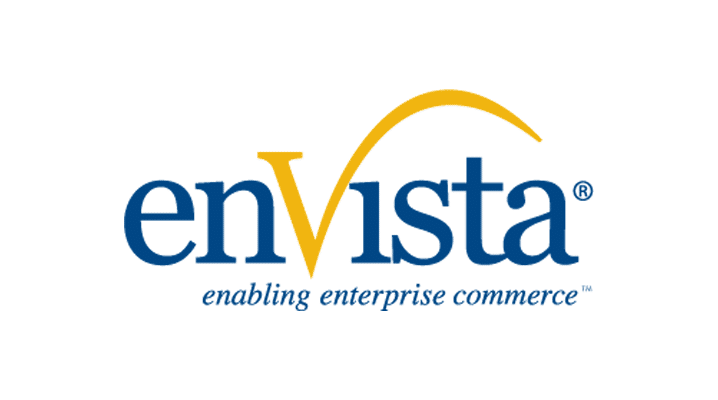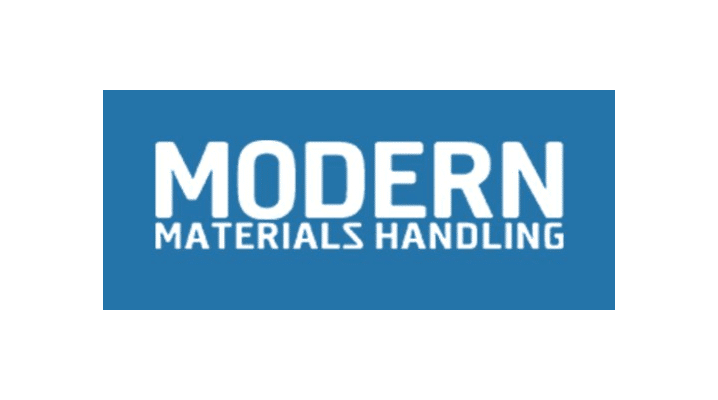enVista announces that it will lead an educational session on improving supply chain operations and satisfying the end consumer at NEECOM.
enVista Hires OMS Veteran Suneel Krishnaswamy to Lead Software Development Across All Commerce Software Offerings
enVista announces that Suneel Krishnaswamy has joined as CTO to lead development and product direction for all enVista software.
enVista to Discuss Microsoft Dynamics 365 in Supply Chain, Warehouse Management at D365UG/AXUG Summit
enVista to discuss improved functionality of Microsoft Dynamics 365 for Finance and Operations and the platform’s Advanced Warehousing Module
System Report: Luxottica keeps it simple
Reading Time: 3 minutes
When Luxottica Group S.p.A. decided to build a new 713,000-square-foot distribution center in McDonough, Ga., the Italian manufacturer and retailer of eyewear, accessories and fashion had three primary goals, according to Massimo Sapone, the senior vice president of logistics and planning for North America.
The first was to consolidate locations in Georgia, Ohio and California into one North American hub that handled all of Luxottica’s brands and provided one face to the customer. But, it wasn’t just a consolidation of Luxottica’s order fulfillment operations.
Take an inside look into Luxottica’s new fulfillment center
In addition to the distribution hub, the McDonough campus features four buildings totaling 1.1 million square feet, including a 50,000-square-foot aftersales distribution center for processing returns and a center for sourcing and planning. In all, 2,000 employees support the logistics and ophthalmic manufacturing operations.
The second was to improve speed to market. “The idea is that we want to be simpler and faster, and we can do that through consolidation of our facilities and the simplification of our processes,” Sapone says.
Third, they put in one place manufacturing and distribution processes, a move that would position Luxottica as the industry leader in customer service. “Our ambition is to gain the No. 1 operation in our industry, and I believe we are already pulling away from our competitors,” Sapone notes.
It is a unique facility, essentially three 238,000-square-foot facilities with 12-foot ceilings stacked on top of one another. The three levels—unusual in North America but more common in Europe—connect with a high-speed elevator and conveyor for lighter weight loads and two heavy-duty freight elevators for heavier pallet loads. Putaway, replenishment and picking operations are directed by a warehouse management system (WMS), RF scanning and lights, depending on the process. The facility also features an extensive conveyor and sortation system, a put wall area and automated packaging for small and medium-sized orders. As part of this project, Luxottica also implemented SAP in McDonough—its global enterprise resource planning (ERP) platform.
At the moment, the ground floor handles receiving and shipping along with order fulfillment processes for a common pool of frames for Luxottica’s wholesale and e-commerce eyewear businesses. The second floor is the manufacturing lab, where prescription lenses are created and married with frames that are stored there to support the lens business. The third floor is reserved for Oakley branded apparel, footwear and accessories—Luxottica and Oakley eyewear are on the first floor.
A facility with 12-foot ceilings might seem unusual in an era when most DCs are more than 30 feet tall or higher. But Vince Pusateri, the senior director of engineering and network strategy for North America, notes that given the size of the products handled in the eyewear business, the ability to efficiently store and pick about 55,000 SKUs in the facility is more important than ceiling height.
“This was a giant project that we launched in 2016, building the campus from scratch,” adds Sapone. “But we now have a distribution facility that enables our business model and allows us to service almost 6,000 stores from one location.”
Made in Luxottica
Luxottica is a leader in the design, manufacture and distribution of fashion, luxury and sports eyewear. According to the company, its portfolio includes proprietary brands such as Ray-Ban, Oakley, Vogue Eyewear, Persol, Oliver Peoples and Alain Mikli. It also licenses brands, including Giorgio Armani, Burberry, Bulgari, Chanel, Coach, Dolce&Gabbana, Ferrari, Michael Kors, Prada, Ralph Lauren, Tiffany & Co., Valentino and Versace.
The group’s global wholesale distribution network covers more than 150 countries and is complemented by a global retail network of approximately 9,000 stores, with LensCrafters and Pearle Vision in North America; OPSM and LensCrafters in Asia-Pacific; GMO and Óticas Carol in Latin America; Salmoiraghi & Viganò in Italy; and Sunglass Hut worldwide. In 2017, with approximately 85,000 employees, Luxottica posted net sales of more than $10.4 billion.
enVista to Share Thought Leadership on Unifying Commerce and Supply Chain at RVCF Fall Conference
enVista will lead an educational session on improving supply chain operations and satisfying the end consumer at the RVCF Fall Conference.
Platooning Tries to Move Past a Work in Progress
Reading Time: 3 minutes
The head of Daimler Trucks has questioned, but not completely written off, the business case for heavy-duty truck platooning in light of other emerging technologies and fuel gains from new combination vehicles operating independently.
Tests using combinations of the latest aerodynamic tractors and trailers showed the gains in miles per gallon were “not as high as expected,” said Martin Daum, head of Daimler AG’s trucks and buses divisions. He delivered his comments during the recent IAA Commercial Vehicles show in Hanover, Germany.
“When it comes to automated vehicle technology, there is a very compelling business case for these systems,” Daum said. “However, platooning might not be the holy grail we initially thought. Therefore, I am a little bit critical of platooning today.
“But at Daimler, we will continue testing this technology and see where it eventually leads us.”
The earliest tests of two closely spaced Class 8 trucks and trailers in a platoon — whose braking and acceleration are linked through software and wireless communications, while steering remains manual — showed gains in fuel efficiencies of about 4% for the lead vehicle and about 10% for the trailing truck.
Meanwhile, in the United States, one group of researchers is looking into an autonomously controlled platoon.
The American Center for Mobility at Willow Run announced organizations representing defense, academia and the public sector will research and test automated convoy platooning during a two-year study that will feature military and commercial trucks in a closed environment and on public roads.
The study will analyze controlling vehicles’ throttle, brake and steering autonomously while maximizing fuel efficiency and safety, according to the Ypsilanti Township, Mich.-based nonprofit, which is one of 10 U.S. Department of Transportation-designated automated vehicle proving grounds.
“Truck platooning will pay safety and environmental benefits that we can only begin to imagine,” Kirk Steudle, director of the Michigan Department of Transportation, said in a statement. Steudle also is ACM’s interim CEO.
At the same time, a European consortium called Ensemble is getting underway to demonstrate multibrand truck platooning on public roads in 2021.
DAF, Daimler Trucks, Iveco, Man and Scania, and Volvo Trucks and Renault Trucks, are involved in the project, according to Ertico, the European intelligent transportation systems public-private partnership.
Significant advances in platooning technology have been made in the past decade; however, a multibrand approach is now required, according to Brussels-based Ertico.
The main benefits from platooning are the cost savings in fuel and some relatively easy miles for the driver in the trailing truck, said Eric Grice, project manager of transportation solutions consulting for enVista, a supply chain consulting and IT services firm, based in Carmel, Ind.
For a shipper with a private fleet or dedicated contract carrier covering long distances, platooning makes sense, he said.
“There will definitely be a perceived operational cost from planning and coordination of drivers and routes to get them traveling together at the same time within service hours and having the same breaks, etc.,” he said.
“As far as shippers choosing from the common carrier pool, in the end it comes down to pricing in most cases. If carriers are able to effectively use platooning to reduce their overall costs and pass those along to shippers, then they will have a competitive advantage and be able to acquire additional business,” Grice said.
In the meantime, if it makes sense to platoon two trucks over a long distance, it also might make sense to run double or triple trailers pulled by a single truck over a long distance — an option blocked in many areas by regulations, another consultant said.
“You can find an argument in there for something that is less technologically challenging,” said Rick Mihelic, president of Mihelic Vehicle Consulting in Lewisville, Texas. “But there is more of an investing sexiness to platooning, which is on the verge of becoming a reality. There are prototypes out already, but production use of it is still a little ways off.
“I was kind of surprised that Daimler came out and said that. I would agree it is getting harder and harder to make a single tractor-trailer combination better aerodynamically. We have had 10 to 15 years of refinement in the aerodynamics.”
But Mihelic said data he collected when involved in tests that platooned the ultra-sleek Super Trucks developed in a U.S. Department of Energy program showed double-digit gains in fuel efficiency were possible.
Other companies involved in commercializing platooning did not respond to a request for comment.




